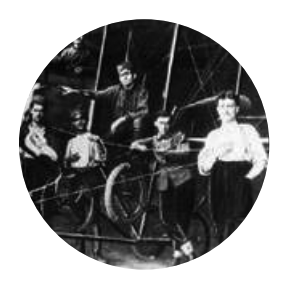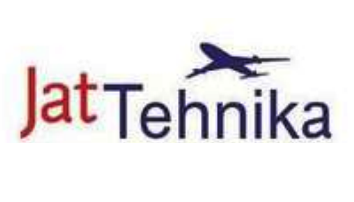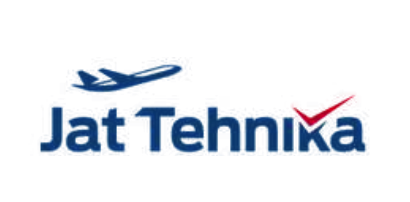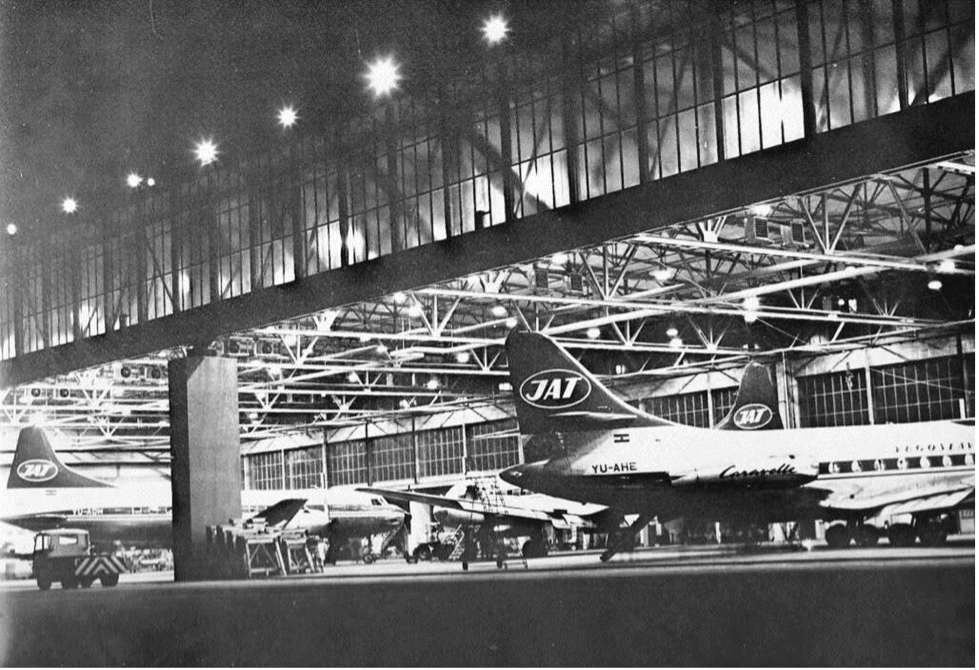History

the airline AEROPUT has founded its own technical division

the airline AEROPUT changed the name into JAT (Yugoslav Airlines)

Jat Tehnika was founded on January 1st 2006 as a spin-off of the company Jat Airways

In 2019, JATT became a privetely owned company
JAT Tehnika, as successor to Aeroput and JAT Airways, celebrates 98 years of high performance in aviation
On that 15th February 1928, a French plane Potez 29-2, under the name “Belgrade “, took to the skies, under the command of Tadija Sondermajer, aircraft engineer, aviator and hero of the Serbian liberation wars. Sondermajer and co-pilot Vladimir Striževski fired up the engines of the plane that took off at 9 am from the “runway “, or should we say a reworked meadow on the territory of today’s New Belgrade. The first passengers, of course, were journalists and photojournalists, with five of them coming from the Belgrade media scene.
“Wheels hurl mud in all directions, “noted Politika’s journalist, “as we climb and our plane leans into a spin, it seems to us that we have not tilted, but rather that the whole of Belgrade has slanted to the side and will plunge into the Sava River.” After a two-hour flight through cloudy weather, the plane landed at Borongaj Airport, but not before making a couple of laps above Zagreb. It was greeted by a large number of citizens and representatives of the authorities, and that same afternoon saw a group of Zagreb journalists flew to Belgrade. The planes flew the Belgrade-Zagreb route every day except Sundays, all the way until November, when winter weather conditions led to the suspension of air traffic. And the response of the passengers was greater than expected, despite the high price of tickets and their fear of flying.
The aviation industry has shown significant potential
It was just two years earlier that the idea of establishing an air transport company had been born. The idea was interesting, but risky, since the distrust in the kind of novelty represented by the plane was great. The first successful “airplane” flight had taken place just 24 years earlier. It covered a distance of 37 meters and lasted 12 seconds. The Aero-club raised only 10 percent of the funds required. Then Sondermajer launched what we would today refer to as a “promotional” flight from Paris to Mumbai (then known as Bombay) and then to Belgrade. His efforts bore fruit, with shareholders realizing that the planes might have a future and deciding to invest the remaining money. The first four planes were purchased.
And so, exactly 98 years ago, Aeroput and the first aircraft maintenance division, one of the few in Europe at the time, which paved the way for the establishment of JAT Tehnika, was founded.
Almost a century has passed since the first French Potez 29-2 aircraft to the most modern aircraft of major global companies that are serviced today at JAT Tehnika. With the development of technology and the country, the company itself grew and prospered. Thus, in 1947, engineers installed a new instrument landing system (ILS) on a DC-3 aircraft. Then, in 1965, the aircraft maintenance department got a new hangar and workshops. On December 10, 1969, JAT received a certificate from the US aviation agency, the FAA, which granted an official permit to carry out all types of repairs on the aircraft. In 1975, JAT’s technical department began to maintain aircraft of foreign companies. The JAT department then became capable of performing complete line maintenance and major inspections on the following aircraft types: DC-9 and B-727 (A, B, C, I, D); B-737 (F, CF); and DC-10 (A, C). Additionally, it was capable of performing inspections on the ATR-72 (A, I).

New aircraft types give JAT an edge
Continuing the path of success, the then JAT and Paris-based SNECA the French national company for the study and manufacture of aircraft engines) signed an agreement on the joint construction of an aircraft engine test cell on March 20, 1987. With the construction of a new engine test cell, a part of technical operations at Belgrade Airport, JAT created the conditions to conduct engine tests of every engine in the skies and opening JAT to new possibilities. The Engine Test Unit was qualified to repair, modify and analyze PW JT8D-9-15/17 engines, as well as to perform minor modifications to CFM 56-3A engines.
After that, JAT faced many problems from which it emerged victorious. The 1990s were difficult both for the entire country and for JAT, which suffered heavy losses due to sanctions, war, reduced market and banned flights to many destinations. These unfavorable conditions on the market took their toll and the company had a hard time doing business.
JAT rises from the ashes of war
After the sanctions, it was time to catch up with the rest of the world. JAT started flying to international destinations in October 1994. To facilitate the return, JAT was given back the slots it had before the sanctions. All this indicated the trust that JAT continued to enjoy from its foreign partners – a trust that had been built up over decades and that had not been broken, despite the company’s absence from the public scene.
During a dramatic and difficult period, JAT managed to preserve all its resources – fleet, equipment and employees. The company managed to remain active even in wartime conditions. Despite the political instability in the country, inspections of the planes that remained in the country continued. The training center as well as many other services remained active. This durability has helped the company get to where it is today.
The department for the execution of technical works was the first within “JAT Airways” to receive the certificate of the Joint Aviation Regulations – (JAR) 145, by the inspection of the Hungarian aviation authorities. JAR 145 gave the technical works department the ability to become an independent unit that will operate both for the national airline and for other companies, generating independent revenues.
In 2004 and 2005, JAT faced mechanic strikes. Despite this, JAT received IATA Safety Certificate- IOSA, in February 2005. Thus, JAT received another recognition for achieving and maintaining internationally recognized aviation standards in the field of air traffic safety and fleet maintenance. The company passed the checks without a single negative point. This major achievement is linked to our goal of maintaining high quality and excellence.
#MyWayUp: How passion builds resilience. The amazing story of Vera and Valentina defying old norms to work in aviation
– I started my career in failure analysis. It is a type of work that requires a quick response and where problems are solved ad-hoc. It is quite stressful and requires a specific set of personalities. Certainly not a job for everyone. The shifts are day-night, we communicated with planes in the air, and we went through the manuals that were then only on paper when we needed to diagnose a malfunction. After a year, I had the opportunity to go into engineering. It’s a whole other kind of business. Unlike failure analysis, it is regular office work, intellectually more demanding, while at the same time it is less exhausting emotionally. At that time, we monitored the reliability of components on a much larger sample of the then-large JAT fleet. Unlike today’s principles of MRO business, it was sometimes desirable to have spare parts in stock.
– The part of my career that I am extremely proud of was certainly my transfer to the technical documentation department. Then, in 2005, we reached a turning point when EASA began to demand that one department coordinate all updates and additions to documentation for everything related to aircraft maintenance. It is interesting that at that time, as an organization, we were certified as a “non-EU member” in EASA among the first in Serbia, if not the first. We digitized the documentation, and in 2008 we switched completely to digital documentation. At the request of the head of the department of this department, I returned to engineering. In parallel, while working, I completed postgraduate studies in human resources within industrial management. I became interested in this aspect of the job and there, together with Valentina at one point, I took over the entire HR of JAT Tehnika. I switched from technical to the social profession myself, since I wanted to learn how to communicate better with colleagues. Something completely new came out of it and then I liked it.
Caring for everyone, regardless of gender
Valentina’s career was also slowly moving toward the HR profession. She was educated in all the sciences she wanted to discover and for the first time she left the workshop for one of what can be described as more feminine jobs:
– I have already mentioned to you that I graduated in psychology, and fell in love with psychology. I left the workshop in the field of safety and health and finally became the head of that department within JAT Tehnika. I take care of procedures, and injuries of employees, I refer them to adequate health care, and I take care of the necessary equipment to protect our employees.
JAT Tehnika
– Everything is interesting in its way. To be incredibly focused and accurate when repairing an analog aircraft instrument or when signing 550 instructions for the various regular and emergency health needs of your colleagues. Great responsibility is at stake, both – says Valentina and ends with another wish – to retire in another, completely new field, as a mechanic of a honeycomb structure.
– A mechanic is, after all, the most beautiful job in the world. That feeling when you disassemble a device. It’s easy to fix, but it’s hard to find what’s wrong. It’s a challenge. The hardest thing to find is that out of 1000 little things, there are only 9 of them that can malfunction.
– I would like to add that we are a company that has always had extraordinary employees. I agree with Valentina that diagnostics is what causes, motivates, and inspires. Sometimes a party doesn’t do what it was designed to do. It happens too. Our engineers then make a new repair, make a new procedure, and send that change to Airbus or Boeing, they approve it and solve a big problem. It has never happened that Airbus or Boeing did not approve a solution from an engineer from JAT Tehnika – Vera concludes with pride.

